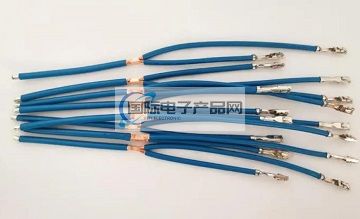Categorization:Product Information
A wire harness is a bundle of multiple wires or optical fibers used to transmit signals, power or optical signals. The standard specification of wire harness design mainly includes the following aspects: material selection, size specification, electrical characteristics, protective measures, marking requirements and testing requirements, etc. 1. Material selection: insulation materials: according to the working environment and demand for the selection of suitable insulation materials, such as polyvinyl chloride (PVC), crosslinked polyethylene (XLPE) or polytetrafluoroethylene (PTFE), etc. 1. Conductor material: select the appropriate conductor material according to the current load and conductivity, such as copper or aluminum, etc. 2. Size specification: wire diameter: according to the current load and resistance requirements to determine the diameter of the wire to ensure that the wire can withstand the required current and reduce the resistance loss. Insulation Thickness: Select the appropriate insulation thickness according to the voltage level and insulation requirements to prevent electrical breakdown and insulation breakage. 3. Electrical Characteristics: Frequency Response: Consider the frequency range of signal transmission and select the appropriate harness design to meet the frequency requirements of signal transmission. 4. Impedance matching: According to the environment in which the harness is used and the impedance requirements of the connected equipment, ensure that the impedance of the harness is matched with the equipment to reduce signal reflection and loss.4. Protective Measures: Anti-interference ability: According to the environment in which the harness is located, take the necessary shielding and insulating measures to reduce the impact of external electromagnetic interference on signal transmission. Anti-vibration and tensile strength: taking into account the mechanical stress that the harness may face, take appropriate anti-vibration and tensile strength design to ensure the stability and reliability of the harness. 5. Marking Requirements: Marking Symbol: Marking for each wire or fiber optic in the harness for proper installation and maintenance. 6. Marking location: mark the name, length, use and other information of the harness in the appropriate location of the harness for identification and management.6. Testing requirements: electrical performance testing: resistance, insulation resistance, voltage and other tests on the harness to ensure that it meets the specified electrical performance requirements. Signal integrity test: signal transmission test on the harness to verify the quality and reliability of signal transmission. The basic steps of wiring harness design include: 1. Determine the needs and specifications: Understand the use of the wiring harness environment, application requirements and specifications and standards. 2. Selection of suitable materials: According to the needs of the selection of suitable insulating materials and conductor materials. 3. Determine the wiring harness layout: Considering the length of the wiring harness, the shape and the connection mode, etc., to determine the layout of the wiring harness program. 4. Design the conductor arrangement: According to the circuit requirements and the layout of the wiring harness, the design of the Wire arrangement: according to the circuit requirements and the layout of the harness, design the wire arrangement to ensure that the wiring is compact and effective.5. Electromagnetic compatibility design: take measures such as shielding and insulation, to reduce the impact of electromagnetic interference on signal transmission.6. Mechanical strength design: consider the vibration and tensile strength of the harness, to ensure that the harness in the use of the stability and reliability of the process.7. Marking design: marking each wire in the wiring harness to facilitate the installation, maintenance and management. 8. Testing and verification: electrical performance testing and signal integrity testing of the designed harness to ensure that the harness meets the specified requirements. In summary, the standard specification of wire harness design covers the selection of materials, size specifications, electrical characteristics, protective measures, labeling requirements and testing requirements and other aspects. Harness design needs to be based on specific needs and specifications for comprehensive consideration, to ensure that the harness has good electrical performance, mechanical strength and anti-interference ability in the process of use.

-About International Electronic Products Network platform related to the introduction and sales of products brief: International Electronic Products Network - a professional agent / production / sales of a variety of {connectors | wiring harness | wire and cable products}; if you have a related [connectors | wiring harness | wire and cable products] procurement / purchasing needs or want to buy / to understand which connectors | wiring harness | wire and cable products we can provide solutions, please contact the following Division I business personnel; if you have a related [connectors | wiring harness | wire and cable products] sales / resources and promotion needs, please click "→ Business Cooperation ←" with the person to discuss! If you have related [connectors | wire harness | wire and cable products] sales / resources and promotion needs, please click on the "¡¡ Business Cooperation ←" to discuss with a person!